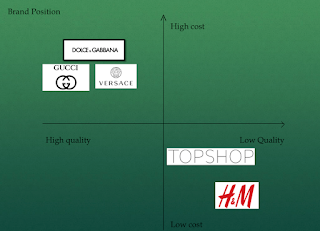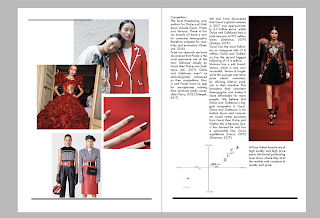Asian Market - Luxury market
https://atlassociety.org/commentary/commentary-blog/5437-the-asia-luxe-explosion
https://www.mckinsey.com/business-functions/marketing-and-sales/our-insights/chinese-luxury-consumers-more-global-more-demanding-still-spending
https://www.marketingtochina.com/luxury-fashion-brand-china-market/
https://www.mckinsey.com/business-functions/marketing-and-sales/our-insights/chinese-luxury-consumers-more-global-more-demanding-still-spending
https://www.marketingtochina.com/luxury-fashion-brand-china-market/
In Tokyo, 94% of women in their 20s own a Louis Vuitton bag. Hong Kong boasts more Gucci and Hermes stores than Paris. China’s passion for luxury has grown with such gusto that the Chinese consumer is already responsible for 10% of global luxe sales. And, in India, there are three-month waiting lists for the latest trendy accessories.
The luxury brand cult is so powerful that Asian consumers account for half of the US$80 billion global luxe industry. Europeans have more money and Americans are among the wealthiest consumers in the world, but it is Asians who are the world’s biggest consumers of luxury brands.
Asians are using luxury brands to redefine their identity and social position.Why are millions of Asians, many of them not wealthy, rushing to buy outrageously expensive designer label bags, shoes, clothes, watches and jewellery?
Asians are using luxury brands to redefine their identity and social position.Why are millions of Asians, many of them not wealthy, rushing to buy outrageously expensive designer label bags, shoes, clothes, watches and jewellery?
The answer lies in the massive economic and social changes that have transformed Asia, in the process dismantling centuries-old ways of denoting one’s place in society. In Japan, Taiwan and South Korea, the development of export-oriented economies led to high technology industries and capital formation that would subsequently fuel economic booms in China, and now India as their economies opened up. In place of rigid social orders defined by birth, family position or profession, there is suddenly a free-for-all, in which the key criterion is how much money you have. “Asians have to show their status somehow, and luxury brands are a great way to do this,” says Jill Telford, managing director of Synovate Hong Kong. “Just look at the Asia-wide acceptance of the Mercedes-Benz as a sign that you have made it—there is nothing shameful in buying luxury brands in Asia.”
The number of Chinese millionaires is expected to surpass that of any other nation by 2018, and by 2021 China is expected to have the most affluent households in the world. In 2016, we estimate that 7.6 million Chinese households purchased luxury goods—a number larger than the total number of households in Malaysia or in the Netherlands. Each of these 7.6 million households spends on average RMB 71,000 in luxury goods per year—which is twice what French or Italian households are spending. Chinese luxury consumers thus account for over RMB 500 billion ($7.4 billion) in annual spending, representing almost a third of the global luxury market.
In 2008, when China hosted the Olympics in Beijing, Chinese consumers accounted for only 12 percent of global luxury spending. In the eight years that followed, we estimate that more than 75 percent of the total growth in global luxury spending, over $65 billion, could be attributed to purchases made by Chinese consumers, either at home or abroad.
By 2025 7.5 million wealthy Chinese households are expedited to spend 1 trillion renminbi in luxury goods.
Wealthy Chinese will represent a major force behind this increase in luxury spending. By 2025, 7.6 million Chinese households will represent RMB 1 trillion in global luxury sales, an amount that is double that of 2016, and equivalent to the size in 2016 of the French, Italian, Japanese, UK, and US markets combined.
East vs West:
Indian luxury consumers are particularly influenced by what others think of them. They consume to achieve societal acceptance, reflecting the hierarchical nature of the society. They use luxury brands to indicate social status, symbolising achievement, wealth and prestige. Shopping for luxuries is fundamentally not an individual experience. Instead it seems rooted in group decisions, meaning that people’s choices of luxury purchases are directed towards others rather than themselves.
Contrast Indonesia, where the culture revolves around how you judge yourself, not how others see you. Indonesians seek to enhance themselves through consumption. Despite the general perception of the country as a collectivist society where people tend to see themselves as similar, consumers won’t follow the recommendations of others if the choice is distasteful to them. They also value luxuries as an enjoyable experience, and may buy such goods as a distraction from the problems in their lives.
In China, despite spending more on luxuries than even the US, the country’s attitude to this market has been strained in recent years. In 2013 luxury advertising on television and radio was banned, which may explain why consumers do not strongly attach such purchases to social status or personal pleasure. Even the country’s premier got involved calling on Chinese officials to refrain from luxury gift giving.
But what we found was still very important to Chinese consumers – and also to a lesser extent those in India and Indonesia – is the quality that luxury brands represent. They are willing to pay a premium price as a result.
In Britain, meanwhile, consumers attach less psychological meaning to luxury goods than in India, China and Indonesia. They are not swayed significantly by the pleasures offered by these brands – which may partly be because many brands have long since gone mass market. Analysts have noticed that the likes of LVMH and Gucci have lost their lustre because they are widely available both in the UK and in other developed markets (the report costs £800 – a sign that luxuries is a valuable business).



Comments
Post a Comment